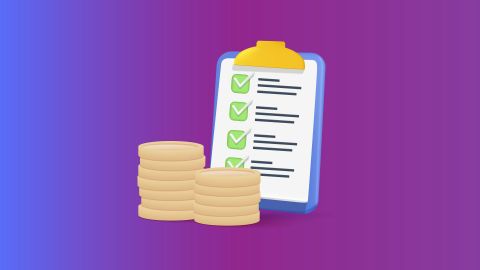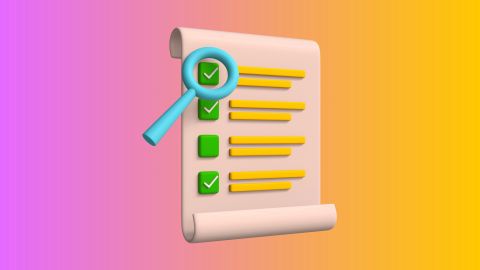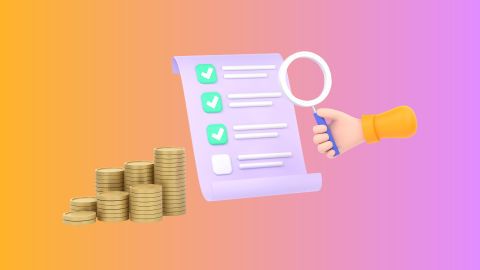Three classifications of assets
Assets are typically classified in three ways:
- Convertibility: This classification is based on how easily an asset can be converted into cash.
- Physical Existence: Assets are divided into tangible assets (those with a physical presence) and intangible assets (those without a physical presence).
- Usage: Assets are classified according to their function or purpose within a business operation.
Types of assets
Assets come in various forms, each serving a distinct purpose in financial management. Here is an overview of different types of assets:
- Tangible assets: Physical possessions like property and equipment.
- Intangible assets: Non-physical assets such as patents and trademarks.
- Financial assets: Investments like stocks and bonds.
- Current assets: Easily convertible assets like cash and inventory.
- Fixed assets: Long-term resources such as buildings and machinery.
What are the features of an asset?
Here are some key features of an asset:
- Ownership: Assets represent a business’s ownership or control, primarily for production purposes. These can be sold or converted into cash or cash equivalents
- Economic value: Every asset carries economic value and can be traded or sold in the market
- Revenue generation: Assets act as resources that drive business revenue. For instance, machinery boosts production capacity, leading to economic gains
- Maintenance cost: Assets usually incur maintenance or repair costs. Proper upkeep ensures smooth operations, while breakdowns can result in significant revenue losses
- Depreciation: Over time, assets lose value due to wear, tear, or obsolescence. This reduction, called depreciation, continues until the asset’s useful life ends
- Estimated useful life: Assets have a defined lifespan during which they operate effectively. This is determined by vendors or professionals based on the asset’s condition and usage patterns.
- Scrap value: As assets age and become obsolete, they retain a residual value, termed scrap value. Businesses can sell these to scrap dealers, earning indirect income from the sale
Examples of assets
Examples of assets include:
- Cash: Money available on hand or in bank accounts.
- Real Estate: Land, buildings, or other properties owned for personal use or investment.
- Stocks: Shares in a company, representing a claim on its assets and profits.
- Bonds: Debt instruments issued by governments or companies, providing regular interest income.
- Vehicles: Cars, trucks, or other transport used for personal or business purposes.
- Intellectual Property: Patents, copyrights, trademarks, or trade secrets that give exclusive rights to creators or inventors.
Three key properties of assets
An asset is defined by three fundamental characteristics, which determine its role in financial management and wealth creation. These key properties include:
1. Ownership
An asset represents ownership of a tangible or intangible resource that holds value. The owner of an asset has legal or economic rights over it, which allows them to utilise, transfer, or convert it into cash or cash equivalents. Whether it is physical property, financial investments, or intellectual property, assets provide financial security and can be leveraged for future gains.
2. Economic Value
Assets possess inherent economic value, meaning they can be bought, sold, or exchanged in the market. Their worth is often determined by factors such as demand, market conditions, and utility. This economic value allows individuals and businesses to use assets as a store of wealth, collateral for loans, or an investment tool for generating income and capital appreciation.
3. Resource for Future Economic Benefits
Assets serve as valuable resources that contribute to financial stability and future economic benefits. Businesses, for instance, utilize assets such as machinery, inventory, and intellectual property to drive revenue and sustain operations. Similarly, individuals accumulate assets like savings, real estate, or stocks to secure long-term financial growth. Proper asset management ensures that these resources are optimally used to maximize profitability and wealth accumulation.
Understanding these three fundamental properties helps individuals and businesses make informed financial decisions, manage risks, and strategically invest in assets to enhance their financial well-being.
How are current assets different from fixed (noncurrent) assets?
Assets are generally divided into two main types: current assets and fixed (non-current) assets. The key difference is based on how quickly they can be converted into cash and their useful life. Current assets are short-term and can be turned into cash within a year, while fixed assets are long-term and used by the business over several years.
Criteria
|
Current Assets
|
Fixed (Non-Current) Assets
|
Liquidity
|
Easily converted to cash
|
Not easily converted to cash
|
Time Horizon
|
Short-term (within a year)
|
Long-term (more than a year)
|
Examples
|
Cash, Accounts Receivable, Inventory
|
Property, Equipment, Intangible Assets
|
Difference between tangible and intangible assets
Difference
|
Intangible assets
|
Tangible assets
|
Definition
|
Intangible assets lack physical form but hold monetary value. They are vital on the company's balance sheet and can enhance its valuation over time.
|
Tangible assets have a physical presence and finite value. They can be bought or sold, though liquidity may vary.
|
Physical existence
|
Intangible assets do not have a physical form, making them harder to trade than tangible assets.
|
Tangible assets exist physically and are easier to trade in comparison to intangible assets.
|
Convertibility to cash
|
Intangible assets are generally easier to convert into cash compared to tangible assets.
|
Tangible assets are relatively harder to convert into cash compared to intangible assets.
|
Valuation
|
Intangible assets are valued by comparing cost with market value, often the lesser value is used. Their valuation is more complex than tangible assets.
|
Tangible assets are valued by deducting depreciation (if applicable) from their cost, making valuation simpler.
|
Liquidation
|
It is more difficult to liquidate intangible assets due to their lack of physical presence.
|
Tangible assets are easier to liquidate because they are physical items that can be sold.
|
Examples
|
Examples include brand recognition, goodwill, patents, copyrights, and trademarks.
|
Examples include land, machinery, buildings, furniture, computer equipment, and vehicles.
|
Difference between Assets and liabilities
Aspect
|
Assets
|
Liabilities
|
Definition
|
Assets are resources owned by a business that are expected to bring future economic benefits.
|
Liabilities are financial obligations or debts that a business owes to others.
|
Depreciation
|
Most assets lose value over time and are subject to depreciation.
|
Liabilities do not depreciate as they are obligations rather than owned resources.
|
Basic Formula
|
Assets = Liabilities + Shareholder’s Equity
|
Liabilities = Assets - Shareholder’s Equity
|
Cash Flow Impact
|
Assets typically generate cash inflows for the business.
|
Liabilities usually result in cash outflows as they need to be settled over time.
|
Types
|
Assets can be classified as tangible, intangible, current, or non-current.
|
Liabilities are categorised into current (short-term) and non-current (long-term).
|
Examples
|
Examples include cash, accounts receivable, inventory, goodwill, property, and investments.
|
Examples include loans payable, accounts payable, interest payable, and deferred revenue.
|
How assets work
Assets serve several important functions by adding financial value to their owner:
- Generating Revenue or Income: Assets like rental properties provide steady income, while machinery in a business helps produce goods that can be sold for profit.
- Converting to Cash (Liquidity): Many assets can be sold or exchanged for cash when needed. Cash is the most liquid asset, but stocks, inventory, or other items can also be converted into cash to meet expenses or fund operations.
- Appreciation in Value: Some assets, such as real estate or certain investments (stocks, bonds), may increase in value over time, helping to build wealth.
- Securing Financing: Assets can be offered as collateral for loans. Lenders use the value of these assets to assess creditworthiness and determine loan terms.
- Reducing Expenses: Using assets efficiently, like energy-saving equipment in a business, can lower operational costs and improve profitability.
Importance of asset classification
Asset classification is an essential part of financial accounting and management. It helps in effective financial planning, fund allocation, tax planning, and risk management. By classifying assets, one can gain a better understanding of a company's financial health or an individual’s financial status. It provides valuable insight into the liquidity of the assets, their utilization in generating income, and the risks associated with investing in those assets.
Conclusion
In conclusion, assets are crucial components of a business's financial health, encompassing both tangible and intangible resources that contribute to its value and growth. Effective management of assets, whether physical or non-physical, is essential for maximising profitability and sustainability. Moreover, businesses often require additional funding to acquire or leverage their assets fully. In this regard, Business Loans offer tailored financial solutions to support businesses in their asset acquisition and expansion endeavours. Whether it is investing in new equipment, expanding infrastructure, or enhancing intellectual property, Business Loan provides accessible and flexible financing options to help businesses realise their full potential.
Helpful resources and tips for business loan borrowers






